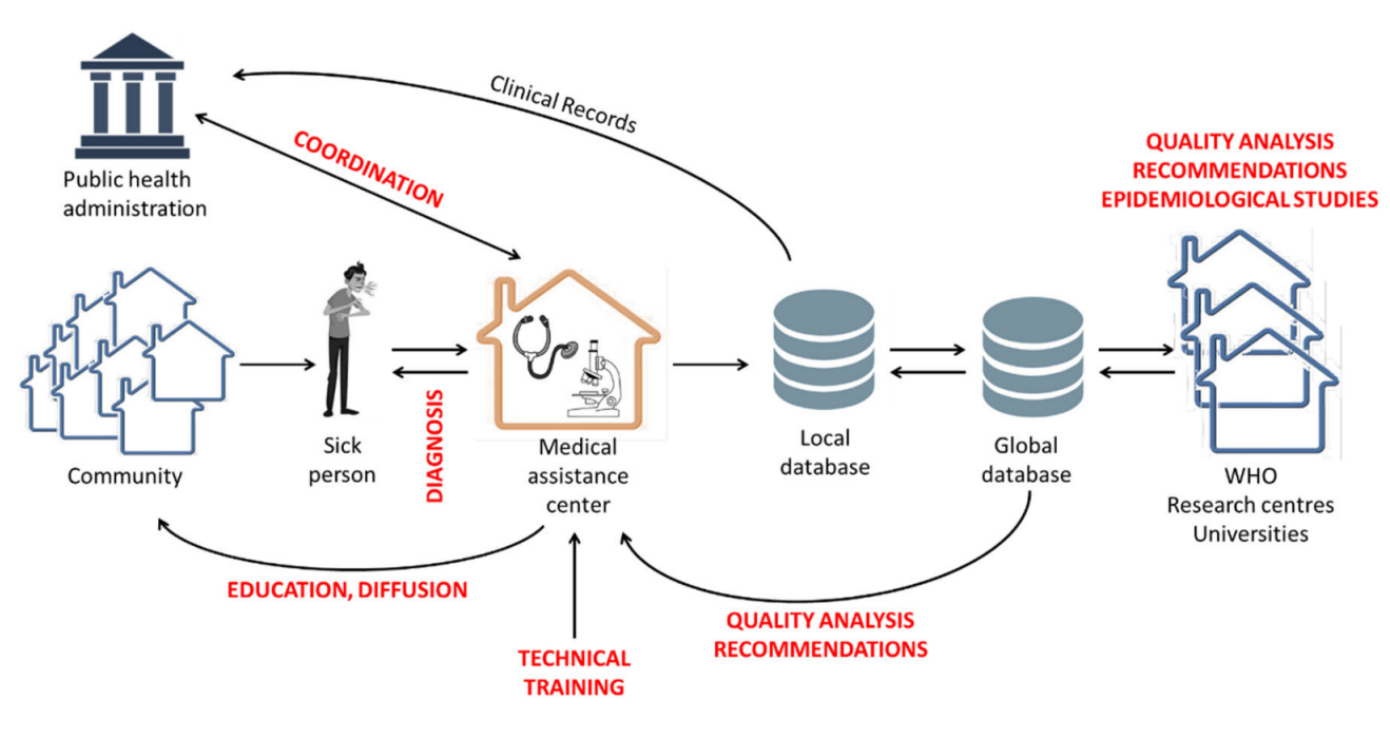Project
Goals and development of the project
The challenges to be solved
● Infradiagnosis - Control of epidemics is impossible if it is not diagnosed in most of the affected population. Underdiagnosis implies that the disease continues to spread, probably out of control. Many diseases such as tuberculosis or malaria suffer from significant underdiagnosis.
● Slowness in diagnosis - A rapid diagnosis prevents or minimizes the transmission of diseases. In the case of malaria, an early diagnosis prevents the infection of mosquitoes that act as vectors of the parasite. Difficult access to diagnostic systems in many environments is the cause of slow diagnostics and underdiagnosis.
● Limitations of rapid tests (RDTs) - Rapid tests are proposed as a tool to solve the above problems. Their price and availability are a barrier to widespread use. Moreover they cannot determine the degree of parasitaemia. Currently, diseases such as malaria are mostly diagnosed by microscopy, which continues to be the gold standard diagnosis technique.
● The difficulties of microscopy - diagnosis by microscopy is demanding, requires considerable expertise, time and effort. It is difficult to guarantee a quality diagnosis, especially in cases where the parasitaemia is low.
Goals
The general objective of the project is to contribute on the one hand to the achievement of facilitating the diagnosis of malaria and blood parasites such as Chagas disease, and on the other hand, developing an effective, affordable and quality diagnostic system.
The aim of the project is to develop a system to reduce underdiagnosis as well as the effort and time required to perform a quality diagnosis. All that at a very low cost and following the official protocols of the health institutions in each country. As a result, the objectives that go beyond the aims of the project are also achieved, such as the creation of a database of labeled images and the development of a low-cost system for obtaining microscopy images. The following figure outlines the proposed method in this project:

Methodology
Below we detail methodology and work plan of the project. Project tasks have been divided into a set of work packages which contribute to each of the components of the following system architecture:

The tasks consist of the digitalization of malaria samples, development of an image annotation tool and subsequent labeling of samples with it. For the microscope control and image acquisition, an automatic microscope control system using Arduino is used. This system is in constant development and improvement.
An app implementation is used to allow capturing microscope images from the phone. Also, a predictive model of sample quality in the telephone is integrated.
Next step is the development and testing of quality sample prediction model of malaria infection. Predictive models are packaged in Software libraries for applications to be used (e.g., mobile apps, GLI-Software, etc.). This requires the development of a protocol to automatically update predictive models on devices. In addition, an extension to make GLI-Software capable to store images from patients' samples is going to be created, as well as an implementation of GLI-Software communication protocol (Mobile app) and data exchange protocol with the global repository. Another extension to incorporate predictive models and use them in the diagnosis will be created too.
Finally, for the quality control of image analysis and diagnosis, a validation and refinement of labels and predictions will be carried out together with a comparison with other diagnostic methods.
Ongoing activies
● Create a database of microscopy images with the identified labeled parasites.
● Develop systems based on artificial intelligence tools for the identification of parasites in new samples.
● Optimize the automatic microscope control system using an Arduino computer controlled by a mobile phone that captures images.
● Develop diagnostic systems, taking advantage of the systems achieved in the first objective of this list using a computer or in its absence a mobile phone.
● Collect images and the resulting automatic diagnostics to be able to review the quality of the diagnosis and improve the artificial intelligence models.
● Elaborate the teaching material for the technical training programs. Design training programs.
● Design action campaigns to bring the population closer to the diagnostic units.
● Carry out pilot tests in laboratories within the context of the GLI program of the Probitas Foundation.
● Share information on diagnostic work with health authorities, international entities and collaborating institutions, ensuring at all times data protection and compliance with relevant legislation.
Share: